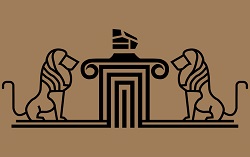Finishings of natural stone
After the quarrying process, natural stones can be modified by the finishing process in many ways. The finishing’s are often selected based on the intended use of the stone and according to the interior and exterior application using a variety of techniques and mechanical processes. Some of the typical natural stone finishes are polished, natural, aged, tumbled, bush-hammered, sandblasted, mushroom, leather, flamed and sawn.
Polished
Natural stones are polished through the application of abrasive material by polish heads that gradually are changed from coarse to fine. This technique brings out the colour and properties of the polished natural stone.
Natural
A natural finish implies the absence of treatment. It is used exactly as it is extracted, leaving the finish as natural as possible. This finish is mostly used for cladding and cobblestones.
Aged
This treatment involves vibrating the surface of the stone to mimic ageing. Although there are many methods used to go about this treatment, generally all of them lead to a soft surface.
Tumbled
Tumbled is also an ageing treatment to achieve an antique finish. In this case, a vibrating drum-like machine uses finer, more resistant stones, to wear out the surface of the natural stone. This leaves an aged finish and generates a soft surface.
Bush Hammered
This finish is achieved by hitting the surface of the natural stone with a tool called bush hammer. It generates an uneven surface creating craters of different sizes. Through this method, the surface becomes slip-resistant and is used ideally for dense traffic areas.
Sand Blasted
This finish falls in the same category as bush hammered. The surface of the natural stone is blasted with small silica particles using an air gun. This creates little craters on its surface, highlighting the colour of the stone and creating a more slip-resistant finish.
Mushroom
This finish is generally achieved by manual tools which through controlled blows, chip the surface of the natural stone. This creates a rustic appearance, enhancing the texture and irregularities.
Leather
This is achieved by brushing the surface of the natural stone by various brushes. This results in a surface which is soft, warm and smooth to the touch. Very few stones can be treated using this method, including granite.
Flamed
This is done by exposing the surface of the stone to a high-temperature flame. This creates roughness and makes it suitable to withstand exterior use.
Sawn
This is achieved using a diamond disc tooth saw. The surface of the stone is sawn to create a rough and irregular finish. This makes the overall stone lighter and gives it a non-glossy finish. It is generally used for external paving, steps, pathways, driveways and patios.



